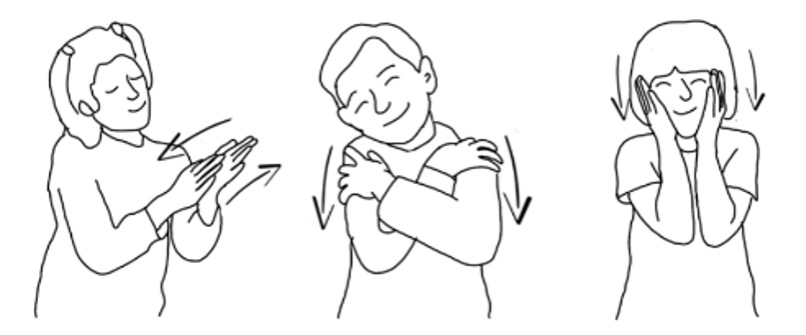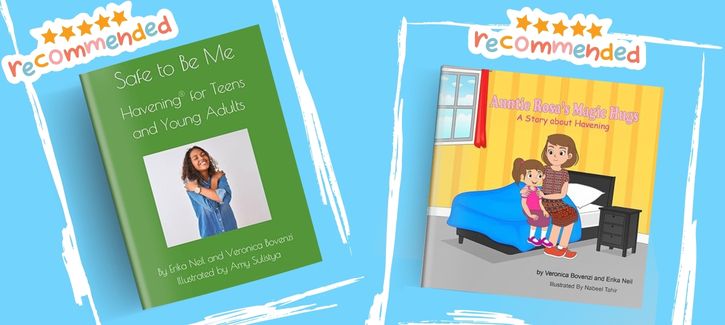Havening to the Rescue


Ever wish you had an easy way to reassure your kids (and yourselves) when emotions are strong? Well you might have just found one. Havening® is an enjoyable, simple and effective hands-on self-regulation technique that is perfect for kids and families.
The term Havening comes from the word “haven” because it creates a safe-haven inside. Havening consists of nurturing touch on the hands, arms, and face that children can do on themselves or can receive from a parent. Parents can do the touch on themselves too.

The motions are: rubbing hands together as if you were spreading lotion of your palms; rubbing your arms from shoulder to elbow like stroking a pet; and rubbing your face as if you were washing it. You can modify or eliminate a location that feels uncomfortable. For example, you or your child could just rub the cheek or forehead instead of the entire face. It is important to check in whether each location of touch feels pleasant.
The same motions can be done on another person after checking for permission and comfort at each location of touch.

Havening can be done on infants through adults for nurturance and reassurance. Self-havening as well as partner havening improve mood and stress levels. Many studies have demonstrated the positive effects of touch on mental health. Havening touch in particular calms the body and mind by increasing oxytocin, serotonin, GABA, and delta waves. It also changes the way the brain stores experience from unpleasant to neutral or even pleasant.
Havening touch reduces distress even if kids apply it while talking to you about something upsetting. In fact, that is a very good occasion to begin using it. Also, if you start doing Havening touch on yourself while your child is talking to you, that can help your child feel better through mirror neurons. You can further ask if it is okay with them if you apply Havening touch to them. In addition to calming their nervous system, it can also help with bonding and deepening the connection between you.
Havening’s relaxing effect works even better when you distract the mind with something engaging including humming, singing, saying rhymes, or talking about a fun hobby. With permission you can haven them while they tell you about their day afterschool or while doing their bedtime ritual.
Havening enhances calmness, focus, learning, and confidence. Kids can haven while naming the alphabet, numbers, multiples, months of the year, and states to help with relaxing and memorizing.
You can use Havening to enhance good feelings by sensing and saying these feelings while applying Havening touch. For example, “calm, calm, calm” or “confident, confident, confident.” This is called Affirmational Havening.
Desired feelings can be strengthened by Havening while thinking of times you had those desired feelings and saying positive “what if” statements. For example, “What if I’m confident?” or “What if I can do this?” This is called Iffirmational Havening. It helps greatly with challenges and self-doubt.
Havening was developed beginning over twenty years ago by Drs. Ron and Steve Ruden after studying how to modify brain encoding and landscape through psychosensory input. In addition to its self-care uses, Havening is an extremely powerful technique to use with a Havening practitioner to resolve PTSD, phobias, panic, somatization, and prolonged emotions like grief. To find out more about Havening or to find a Havening practitioner, please explore Havening.org.
To find out more about uses of Havening within families please check out:
https://www.humanitarianhavening.org/family-havening.html
Two helpful books about Havening for young people are:
Auntie Rosa’s Magic Hugs: A Story about Havening https://a.co/d/1fdVbeb
Safe to be Me: Havening for Teens and Young Adults https://a.co/d/aVKn3uK

For more information please contact: HumanitarianHavening@gmail.com
Erika Neil, LCSW, JD, is a psychotherapist, Havening trainer, and co-founder of Humanitarian Havening
